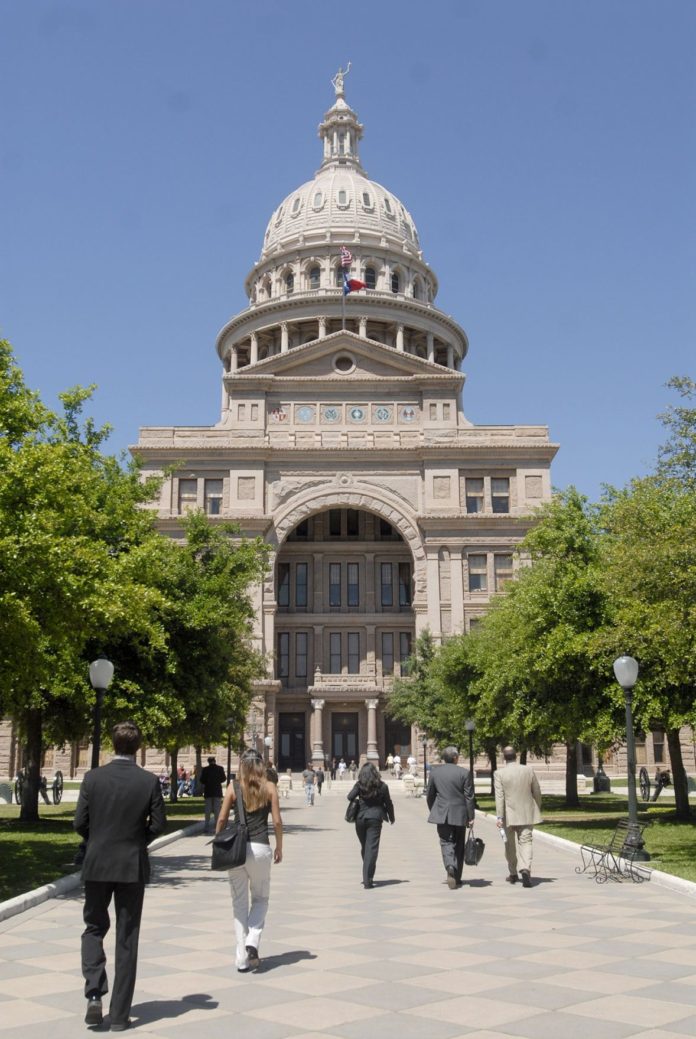Despite mounting opposition, the company backing high-speed rail between Dallas and Houston insists that the $12 billion plan will reach fruition.
“Everything is moving forward exactly as planned,” said Travis Kelly, vice president of government relations with Texas Central High-Speed Railway LLC.
Speaking to the Fort Worth Business Press minutes before addressing the 35W Coalition’s April 15 quarterly meeting at Texas Motor Speedway, Kelly expressed confidence despite proposed legislation that could derail the plan.
Introduced by state Sen. Lois Kolkhorst, R-Brenham, Senate Bill 1601 would prohibit companies from wielding eminent domain authority when developing high-speed rail projects. The bill advanced out of a Senate committee earlier this month.
Kolkhorst has expressed skepticism to the Dallas-to-Houston plan while lamenting what she fears could happen to private landowners; namely, that they could lose their homes to clear the way for bullet trains.
That’s unlikely, according to Kelly.
“We’re working closely with their [state representatives’] constituents to make sure they have a clear understanding of what our plan is, what the impacts could be and the measures we’ve taken to reduce those impacts,” Kelly said.
Barring legislative snags, construction would begin in 2017 and reach fruition in 2022. Riders would get from Dallas to Houston in less than 90 minutes at 200 mph.
Funding would be entirely private, with no tax dollars spent. The company is even paying for its environmental impact review, one of several mandatory government-required steps for such projects.
The road to rail began with a feasibility study finding that constructing track between “pair cities” such as Dallas and Houston would require less funding than laying track within more congested urban areas such as the stretch between Fort Worth and Dallas. Conducting the 2011-2013 study was Steve Mattingly, a University of Texas at Arlington civil engineer.
Mattingly and a 12-member team comprising several UTA colleagues, as well as staff researchers from the University of North Texas, were paid about $350,000 to conduct the study.
The study found that several routes – Dallas to Houston, Dallas to San Antonio, San Antonio to Houston and Houston to Waco – could accommodate high-speed rail within existing Texas Department of Transportation right of way, which would lower construction costs and shorten construction time.
“There are several alignments generally within one corridor being looked at,” Kelly said. “We’re getting ready to determine where those specific lines are on the map so we can speak to those landowners and work with them on how this system can best be designed,” Kelly said.
Some say the best design is no design, with a group called Texans Against High-Speed Rail Inc. urging Texas lawmakers in Washington, D.C. to deny operating permission for the Texas plan.
Group president Kyle Workman cited what he called support of at least some state legislators and hopes that they will fight Texas Central Railway’s application to the Surface Transportation Board.
Workman’s group has acknowledged at least some employment opportunities created during the rail line’s construction process, one of several benefits touted by Texas Central High-Speed Railway.
According to company research, the project would create 10,000 full-time jobs during each year of the four-year construction phase and 750 permanent jobs for ongoing operations.
The project also would pour $10 billion into local economies during construction, as well as bring property taxes to all local taxing districts along the route and state franchise tax paid on assets and revenue.
“We’re going to be taxpayers in those counties,” Kelly said.
Fort Worth also stands to benefit from the high-speed plan.
“We’re working toward planning the Dallas terminal so that it could connect with all the modes that the region has to offer, including the Fort Worth-Arlington-Dallas project that’s also under environmental review right now,” Kelly said.
Championing that separate rail route that would link Fort Worth and Dallas are the Texas Department of Transportation and the North Central Texas Council of Governments, as well as Fort Worth Mayor Betsy Price, Dallas Mayor Mike Rawlings and Arlington Mayor Robert Cluck.
Overseeing that plan is a high-speed rail commission spearheaded by Fort Worth businessman Bill Meadows, a former commissioner of the Texas Transportation Commission and former Fort Worth city councilman.
The rail commission is reviewing potential routes; specifically, along Interstate 30 and the Trinity Railway Express.
“Building along I-30 would be more expensive than building near the TRE because of, obviously, engineering challenges with the current infrastructure in place,” said Meadows, referring to having to work around that infrastructure.
Posing potentially greater challenges is not only the aforementioned Senate bill, but also a separate legislative proposal that would prohibit state funds from being spent on the advancement of any high-speed rail project in Texas.
“That provision could stop high-speed rail in its tracks statewide,” said Meadows, whose commission is working with elected leaders to discuss what he called the merits of rail.
“I’m fairly confident we’ll come out of the legislative session with the ability to advance high-speed rail,” Meadows said.
Projects costs await the outcome of an ongoing environment impact review, expected in late 2017.
“It will be a combination of public and private funding. I can tell you it will be several billion dollars,” Meadows said.
As for the Dallas-to-Houston route, projected population growth makes fulfilling the plan especially vital, Kelly said.
By 2035, Dallas-Fort Worth’s current 6.4 million population is expected to reach 12.6 million, with Greater Houston growing from 5.9 million to 12 million in the same time frame, according to Texas Central High-Speed Railway research.
Meanwhile, the same study determined that traffic congestion in those metropolitan areas is expected to double, with the average freeway travel time between Dallas and Houston rising from four to 6.5 hours during the same period.
“This is an important project,” Kelly said. “This will be the first high-speed rail system in the country, and to have it right here is great for everybody.”






